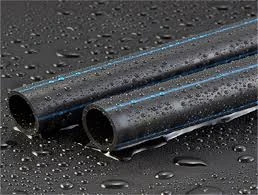Aug . 12, 2024 18:32 Back to list
Exploring Applications and Benefits of Large Diameter PVC Pipe in Modern Construction Projects
The Importance of Large Diameter PVC Pipes in Modern Infrastructure
Polyvinyl chloride (PVC) pipes have evolved to become one of the most widely used materials in water management systems worldwide. Among them, large diameter PVC pipes play a crucial role in various applications, including wastewater management, stormwater drainage, and potable water supply. This article explores the significance, benefits, and applications of large diameter PVC pipes in modern infrastructure.
Durability and Longevity
One of the primary advantages of large diameter PVC pipes is their exceptional durability. Constructed from high-quality PVC material, these pipes resist corrosion, abrasion, and chemical degradation, making them ideal for transporting various fluids. Unlike traditional materials like metal or concrete, PVC does not rust or rot, ensuring a longer lifespan with minimal maintenance. This durability is particularly essential in large-scale projects where replacing or repairing infrastructure can be costly and disruptive.
Lightweight and Cost-effective
Large diameter PVC pipes are significantly lighter than their metal or concrete counterparts, which simplifies transportation and installation. This lightweight nature reduces labor costs and can expedite the installation process, resulting in overall cost savings for large projects. Furthermore, fewer resources are needed for handling and support structures, making them an economically efficient choice for municipalities and construction companies.
Hydraulic Efficiency
The smooth inner surface of PVC pipes promotes high flow rates and reduced friction, which are critical factors in hydraulic engineering. Large diameter PVC pipes are designed to minimize turbulence and blockage, facilitating efficient transportation of water and other fluids. As a result, cities and industries can ensure the effective management of water resources, essential for both domestic and industrial sectors.
large diameter pvc pipe

Environmental Benefits
Using large diameter PVC pipes also supports environmental sustainability. PVC is a recyclable material, reducing waste and encouraging reuse in other applications. Additionally, the energy required to manufacture and transport PVC pipes is significantly lower than that of alternative materials. This lower environmental footprint aligns with global efforts to reduce carbon emissions and promote sustainable infrastructure. Moreover, because they are resistant to chemical leaching, PVC pipes help protect water quality by preventing contaminants from entering the water supply.
Versatility in Applications
The versatility of large diameter PVC pipes makes them suitable for various applications. In wastewater management, they are commonly used for sewer systems and treatment facilities. Their strength and resistance to hydrogen sulfide gas ensure durability in harsh environments. In stormwater management, large diameter PVC pipes effectively handle significant rainfall runoff, reducing the risk of flooding in urban areas. Additionally, they are used in industrial applications, where they can transport chemicals and other fluids safely.
Regulatory Compliance and Standards
Large diameter PVC pipes often comply with strict industry standards and material specifications, ensuring they meet the necessary regulatory requirements. These standards ensure that they can withstand high pressures and impacts, making them a reliable choice for municipal and industrial applications. Regular testing and certification from recognized bodies assure users of their quality and performance, further cementing their place in modern infrastructure development.
Conclusion
In conclusion, large diameter PVC pipes are essential components of contemporary infrastructure. Their durability, cost-effectiveness, and hydraulic efficiency position them as a leading choice for water management systems globally. As more cities and industries gravitate toward sustainable practices, the relevance of large diameter PVC pipes will likely continue to grow, supporting efficient and durable solutions for tomorrow's challenges. As infrastructure needs evolve, the role of PVC pipes in managing our vital water resources remains paramount, driving innovation and sustainability in urban planning and development.
-
High-Quality PPR Pipes and Fittings Durable ERA PPR & PVC PPR Solutions
NewsJul.08,2025
-
Black HDPE Cutting Board - Durable, Non-Porous & Food Safe HDPE Plastic Cutting Board
NewsJul.08,2025
-
High-Quality CPVC Panel Durable HDPE & PVC Panels Supplier
NewsJul.08,2025
-
Double PE Welding Rod Supplier - High Strength, Durable & Versatile Welding Solutions
NewsJul.07,2025
-
High-Quality PVC-O Pipe Supplier Durable 75mm PVC Pipe & Connections Leading PVC Pipe Company
NewsJul.07,2025
-
HDPE Drainage Pipe Supplier – Durable & Corrosion-Resistant Solutions
NewsJul.06,2025

